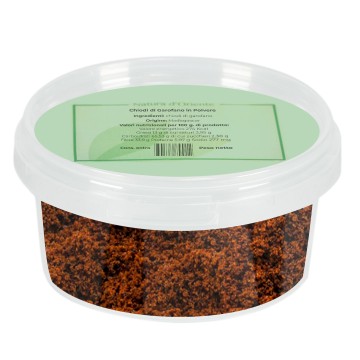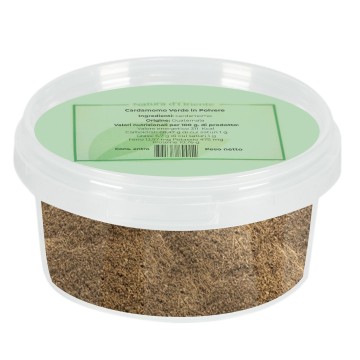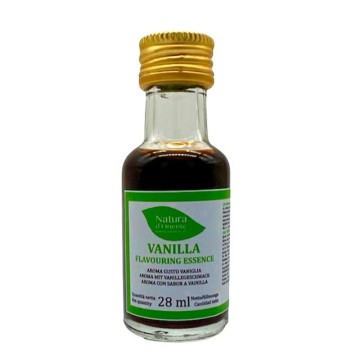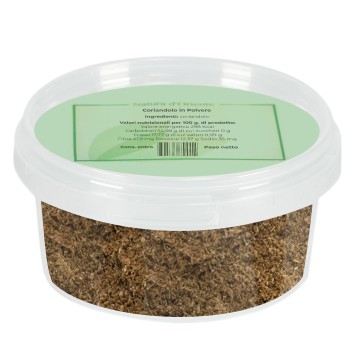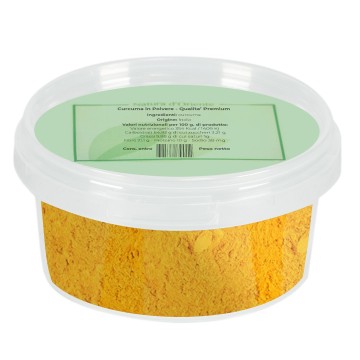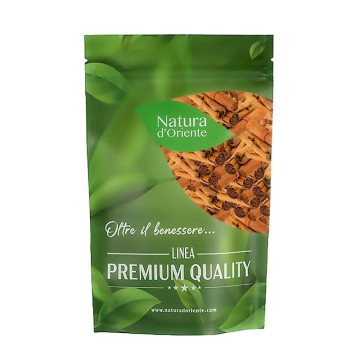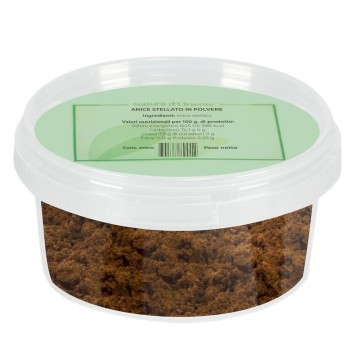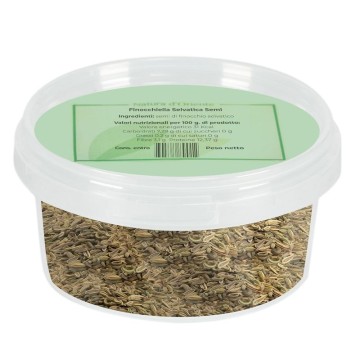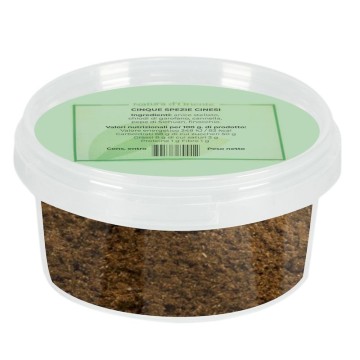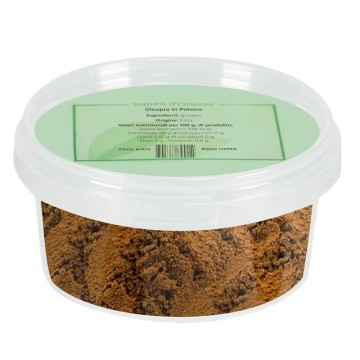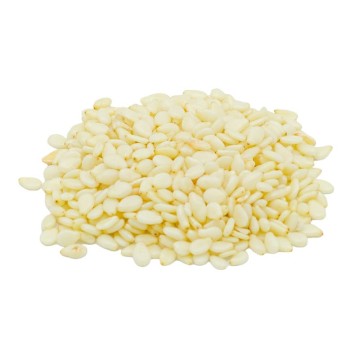Celery seeds, aromatic and beneficial
These small, brown, crescent-shaped seeds are very fragrant and tasty. They have a similar aroma to celery but more concentrated and earthy, and a warm taste with a spicy and bitter hint. They are used especially in Asian, French and Cajun cuisine (American with French influences), where they are used in numerous recipes. For those who want to experiment with this particular ingredient, the seeds are ready to be added to dishes, whole or ground at the moment.
What are the properties of celery seeds?
They have great nutritional value, as they are rich in compounds useful for our well-being. They are a good source of essential minerals such as calcium, manganese, iron, magnesium and phosphorus - despite the fact that they are seeds with a low calorie content (about 25 per tablespoon). They contain antioxidant substances such as flavonoids, apigenin, coumarin and linoleic acid; in addition to some compounds useful for a natural remedy that provides relief in the case of rheumatic and muscular pain. Celery seeds also contain compounds useful for the well-being of the liver and omega-6 fats that are nourishing for the body. They promote diuresis and combat water retention thanks to consumption through infusions and decoctions. Celery seeds can be used in herbal tea, considered useful as a diuretic drink and support for purification. In ancient times, they were used to promote vasodilation and regulate blood pressure. These seeds are also known as a base for creating mosquito repellents, thanks to aromatic compounds such as sedanolide that are useful for keeping these insects away.
Contraindications
Untreated celery seeds for food are generally safe, if you do not exceed the quantity. It is recommended not to use them during pregnancy, as they may cause muscle contractions. They are not suitable for people who are allergic to celery, and medical advice is recommended for those who want to start a treatment based on celery seeds and take diuretic drugs, for problems related to the kidneys and thyroid, anticoagulant drugs or sedatives.
How to buy our celery seeds
It is not easy to find celery seeds to use for condiments and herbal teas; because in Europe celery is usually present as a vegetable or seed. Edible celery seeds, on the other hand, must be specific for food use - not treated as can happen with those for sowing. For this reason, it is essential to rely on an expert retailer such as Natura d'Oriente. You can buy celery seeds online in our web shop of spices and aromatic herbs. You will find celery seeds for sale in the dried version and in loose form. We select them for their high quality, ready for seasonings and herbal teas. You can buy celery seeds in variable weights of 75g, 150g, 250g, 500g and 1kg. Our sales and delivery services reserve you an excellent price for seeds and other loose spices.
How to use celery seeds as a spice?
We know that celery is used among the herbs in cooking, along with carrots and onions, but its seeds are also widespread in many cultures as a spice. Whole or ground, they can flavor different recipes with a strong aroma and an intense flavor, reminiscent of celery in a concentrated way. These small seeds add the flavor of the vegetable, without the bulk or unwanted crunchiness. For this reason, they can replace fresh celery in sautés, and are always available compared to fresh vegetables. Since they can be bitter, it is useful to sweeten them with a quick toasting in a hot pan for a few minutes - be careful not to burn them. They can be chopped because the presence of the whole seed can be annoying, or left whole so that they create a tasty bite on the palate thanks to the volatile oils. They can be added to spice mixes, crushed in a mortar or powdered (they must be ground carefully, since they are very small). In this case, you need to consider the doses of ground seeds, since the flavor becomes more intense and concentrated. In any case, a few seeds are enough for dishes and sauces, given the energetic flavor. Tips for using celery seeds in recipes
Savory recipes: you can enrich soups, broths, minestrone and stews with the seeds, to give more consistency and evoke the flavor of celery. They pair well with pumpkin, potato salads and other winter dishes; they add flavor to vegetables and legumes - just add a few seeds to the recipe. They are perfect for flavoring baked goods such as bread, focaccia, crackers or taralli, giving a unique aroma even to breading. You can also add a few celery seeds to salads and soft cheeses, on avocado and in combination with egg and tomato dishes.
Flavouringante: They are used to enhance the flavor of preserves, pickled vegetables, gherkins, sauerkraut and pickles in the German and Hungarian tradition. Ground, these seeds are an essential ingredient in celery salt, used to create the Bloody Mary cocktail and to season meat, fish, vegetables. Meat and fish: Used mainly on fish dishes, the aroma of celery seeds flavors seafood dishes especially in marinades for grilling or cooking in foil. They add flavor to chicken, white meat and beef in stews and roasts. The seeds are used in recipes for marinades for the BBQ, given their strong celery aroma, very little is enough. The seeds in ground form can be used to flavor cured meats, mortadella and hot dogs.
Sauces: They are often added to homemade dressings, for example in marinades, salad dressings or gravies, to enhance the flavor of recipes. You can combine celery seeds with barbecue sauces and vinaigrettes, excellent for filling sandwiches and wraps, together with white mustard or avocado.
International cuisine: particularly present in Indian, Chinese and French traditions, these seeds are appreciated in various typical dishes or included in spice mixes. Cajun cuisine from Louisiana (with French, African and Spanish influences) often incorporates celery seed among the spices. In Scandinavian cuisine, the seeds are used for salads, sauces and stews, while in Indian cuisine, celery seeds are added to curries and pickles. In China, pink celery is also used to flavor soups.
Infusion: you can prepare a digestive and diuretic herbal tea with celery seeds, adding 1 teaspoon to a cup of boiling water, leaving to infuse for about 10 minutes. Alternatively, you can boil 1 teaspoon of celery seeds in 250ml of water for about 15 minutes on a low heat, for a cleansing effect.
The Recipe: Cream of Chicken with Celery Seeds
Ingredients:
3 chicken breasts, cut into strips and then finely chopped in a blender - 500ml chicken stock - 750ml milk - 75g flour - a pinch of salt - 1 tablespoon olive oil - 50g unsalted butter - 1 clove garlic, minced - ½ small brown onion, finely chopped - 1 small carrot, diced - a pinch of salt - ¼ teaspoon ground black pepper - ¼ teaspoon celery seeds Method
Heat the oil in a large saucepan over a medium-high heat. Add the onion and garlic and cook for 2 minutes until slightly translucent. Add the carrots and celery, cook for 1 minute to soften. Add the butter and melt. Then add the flour and stir constantly for about 1 minute. Add the stock, stir until combined, then add the milk. Stir to ensure it all thickens, then add the salt, minced chicken and spices (celery seed and black pepper). Cook on a very low heat, stirring occasionally to prevent the bottom from sticking. Cook the mixture for about 3-4 minutes without letting it boil. Once thickened to your taste, season with salt and pepper. Excellent base for croutons, gnocchi, rice and other vegetables to add to the cream of chicken.
Where do celery seeds come from?
They can come from either the traditional plant, Apium graveolens, or from a variety of wild celery, Apium Palustre, closely related, which is grown specifically to obtain edible seeds. It belongs to the Umbelliferae family, grows well in marshy and humid soils - in fact it is called Palustre. It is very similar to celery in appearance but with the difference that its leaves are too bitter; on the contrary its seeds are delicious and rich in phytonutrients. They appear small, brown, crescent-shaped; they slightly resemble those of cumin and are considered among the smallest spices ever.
It seems that the plant is native to the Mediterranean area and the Middle East although today it is grown for the particular taste of its seeds especially in India, France and China. We know that celery as a plant has been used since ancient times, and the first evidence of its use in herbal medicine dates back to the 10th century BC. Among the Greeks it was a sacred and magical plant, also mentioned in the Odyssey and the Iliad as a natural remedy, as well as an aphrodisiac. Hippocrates, a doctor and scientist, claimed that celery was an effective calming remedy. As for the seeds, they were used in herbal medicine and phytotherapy historically to treat gout, rheumatic pain, useful for the well-being of the respiratory tract and the skin. In particular, the historical use of the seeds was focused on their diuretic and digestive properties - against stomach problems, indigestion, flatulence and bloating.
Today, celery seeds aremost commonly used as a cooking spice, or for digestive and beneficial infusions.

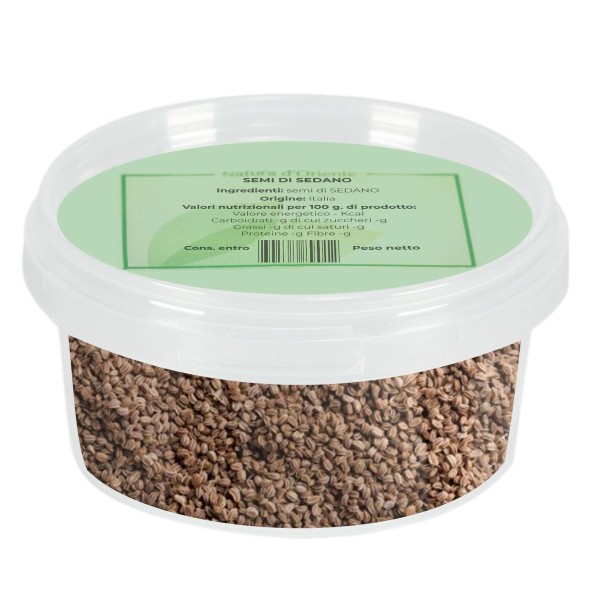







 No reward points for this product.
No reward points for this product.

